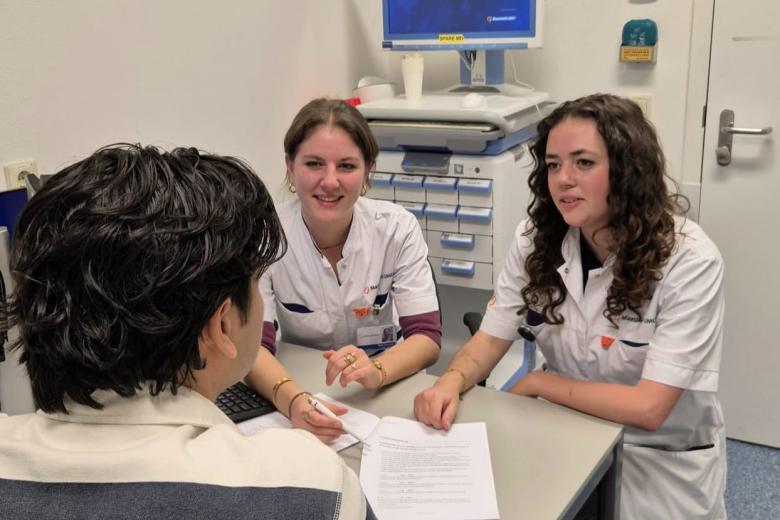Kim Smits: urinary biomarkers improve kidney cancer diagnosis
Can urine be used to detect renal cell carcinoma? The current approach in the case of small renal masses is in most cases a precautionary partial or complete removal of the kidney, without knowing whether the mass is benign or malignant. Molecular epidemiologist Kim Smits is working at the MUMC+ department of Pathology, supported by 'Kankeronderzoekfonds Limburg ' on a non-invasive biomarker test that can distinguish benign renal masses from renal cancer.
Biomarkers are an exciting field of research, according to Kim: “We can use them to help diagnose or prevent conditions and the impact of the research is tangible for patients.” After a period of working on predictive biomarkers for antidepressants, Kim is focusing her work on identifying renal cell carcinoma. This would be a great asset for clinicians after the detection of a small renal mass on a scan.
Incidental discoveries
The use of imaging techniques has led to a rapid increase in the incidental discoveries of small renal masses. In most cases, this leads to a full or partial removal of the kidney. Kim: “It can be difficult to differentiate a benign or malignant small renal mass on a scan. A biopsy isn’t always performed because of their invasive nature and they're not always representative for the entire mass.”
Hold the scalpel
Studies indicate about 25% of removed small renal masses are benign1, according to Kim. “Meaning the patient underwent unnecessary surgery. Our goal is to develop a urine test that clinicians can use to exclude a cancerous tumour and prevent surgery.” Kim composed a panel of 5 methylation markers; tiny chemical changes in the complex surrounding the DNA that can turn off genes that normally help prevent cancer.
Negative predictive value
“We are well on our way to excluding renal cell cancer with the panel, but we’re not fully there yet. At all costs, we must prevent false negatives that send the patient back home.
The prognosis of renal cell cancer is related to stage and the size of the tumour, and the speed at which it grows is unpredictable so immediate treatment is needed.”
The joy of research
Kim is still in the early stage of her research, her excitement however is advanced. “There aren’t that many MUMC+ researchers working on renal cell carcinoma, but part of those that do come together once a month at MUMC+ to discuss their progress. It feels like a club where we can support each other.”
1 Ambani SN, Wolf JS, Jr. Renal mass biopsy for the small renal mass. Urol Oncol 2018;36(1):4-7.
text: Ruben Beeckman
Also read
-
More than a student job: five alumni about their unique role in groundbreaking vascular research
What is it like to take part in cutting-edge vascular research as a student, standing in the operating room, directly responsible for handling patient material? Five alumni of the Maastricht MAPEX student team share what they learned, the challenges they faced, and how this experience shaped their...

-
Sophie Jooren - Compliance to local tobacco policies
Whether a specific intervention to create a smoke-free outdoor environment is effective or not has been widely studied. However, to improve compliance, policymakers need to understand how smokers react to those interventions and the factors influencing their compliance.

-
Sweeteners help maintain weight loss after dieting
Overweight people who want to lose weight successfully are better off supplementing their healthy diet with sweeteners than with foods containing sugar products. An international study, in which Maastricht University (UM) participated, shows that people who supplement their diet with sweeteners are...
